 Originally published December 24, 1993, in Comics Buyer’s Guide #1049
Originally published December 24, 1993, in Comics Buyer’s Guide #1049
That creaking sound you hear is the mail vault at BID being opened. Let’s see what we’ve got.
First up is Gerard Calabrese, Marvel vice president whose coverage in Advertising Age was rife with inaccuracies that were due either to abysmal reporting or abysmal fact dissemination, or a combination of both. The subject of the article writes in:
Your But I Digress column of August 13, commenting on a recent Advertising Age story about Marvel had a lot to say that hit the mark. But if you think having to read that I was 45, twice within 100 words was uninteresting for you, imagine how much of a thrill it was for me.
Here’s where I think you were right:
As you so accurately pointed out, I have had absolutely nothing to do with Marvel’s amazing growth in comic sales in and out of the direct market. By the way, this was pointed out by guys like Lou Bank, Ski Sokolowski, Matt Ragone, Sven Larsen, Mike Hobson and Tom DeFalco even less gently than it was by you.
My comments to Advertising Age were those of a spokesman. It was unfortunate that the credit and not the news was attributed to me. Juno Kim, the writer of the piece, did an otherwise good job, considering that Advertising Age covers the conventional world of advertising and has virtually no knowledge of the comic business.
I also agree with you that the distinction between a `Speculator’ and a `Collector’ would have been much more accurate in my reference to Marvel’s efforts to `reach more people who read our comics as opposed to those who collect them.’ In fact, the quote attributed to me that said `we like them better’ should have been `we like them too.’ That’s my fault, not Kim’s.
Comic books are just about the only part of the general publishing business that has grown rapidly in the past five years. And as you so correctly point out, the main reason for that growth in the face of so much bad news for all other print media is the unique and wonderful nature of direct market.
But as much of a godsend as the direct market has been to comic publishers as well as comic buyers, it cannot be all things to all people.
Kids that don’t already have an interest in comics are rarely brought into the comic reading fold through comic specific stores. And parents of younger kids, who totally control what reading material their children are exposed to, are even further outside the reach of the direct market.
Even you agreed that newsstands, supermarkets, convenience stores, booksellers and big guys like K-Mart and Wal-Mart make up a significant piece of total comic sales. More important, they serve as a place where an awful lot of people have their first meaningful encounter with comic buying.
Pretty good so far. Our only point of disagreement up to now is how interesting the fact that I’m 45 is to anyone other than my insurance agent.
I hate to spoil it, but here’s where I think you’re not right:
The job of getting and keeping comics into the Daltons, Wal-Marts and 7-11s, is one of the most difficult and expensive in the world. You’re right, comics have been in some of those places since before even I was born, but then they also used to sell vacuum tubes and Philco radios, too.
The only thing that has kept comics from going the way of the Philco in those all important outlets is Marvel’s enormous effort to make them an important part of today’s merchandising.
And while I can’t claim credit for those efforts, Marvel certainly can. The people named earlier and a lot of others named, have literally reinvented comic sales in those types of stores and kept the comic book alive as a general consumer product.
The benefit of doing so is obvious to Marvel in that we sell as many as 3 million copies outside the direct market. The benefit to the direct market and other comic publishers is just as obvious.
New readers of comics can only find the diversity and general atmosphere they demand in a direct market store. Once turned on to the magic of comic books, that reader becomes one more asset we all share in the great pool of fans and buyers.
Don’t ever forget that Marvel is the only comic publisher that invests millions of dollars to keep that pool stocked with new people and does not simply exploit the available supply of current buyers.
That effort isn’t limited to putting copies into stores outside the direct market. I can’t fault you for not knowing about Spidey’s Magazine, our latest entry for younger readers, but it’s indicative of our very real effort to reach younger readers and get them into the comic habit early. The benefits of those efforts will be felt by everybody.
Your comment about our pricing of younger kids titles is beyond off the mark, it’s off the scoreboard. In order to reach younger kids and their parents who buy their reading material, Marvel needs to invest heavily in making its younger titles visible and available.
The dollar dynamics of doing so are withering and the profit margin on those sales is very different than sales in the direct market. Even so, Marvel consistently prices those titles significantly under the price of the books it must compete with in those markets. That means SI Kids, Disney Adventures and other formidable non-comic publishers. And while Marvel is a big player in the comic business, the cost of going head to head with the more than 3,000 general interest publishers who fight for every linear foot of space in these stores is almost beyond imagination.
Finally, your depiction of me having contempt for the dedicated, direct market comic buyer is just plain wrong. There is absolutely no conflict in Marvel developing comic sales outside the direct market and its commitment to serving and expanding the audience that powers that market.
And I reply:
Well, Jerry (Gerard seems formal, and Mr. Calabrese might actually come across as sarcastic) obviously I’m not going to debate you on those points where you say we’re in accord (although it’s the first time anyone has characterized one of these columns as “gentle”). Moving on—
While I do nothing to dismiss “Marvel’s enormous effort” in keeping comic books out in front of the buying public—there’s no disputing it, really—I should point out, as a technical matter, that your comparisons to vacuum tubes and Philco radios is of no relevance whatsoever. To use the cliché, you’re comparing apples and oranges.
Vacuum tubes and Philco radios are no longer around because of advances in technology. If you go into a variety store, sure, there’s no Philco radios. So what? There’s radios by Sony. There’s also no 8-tracks, but there’s cassettes. No records, but CDs.
You can’t possibly take Marvel’s efforts in the continued distribution of its own comics—however laudable or aggressive they might be—and say (as you just did) that the only reason that comics as a whole are still around in convenience stores is because Marvel’s responsible for it—particularly if you’re hinging your comparison on old radios.
Vacuum tubes are no longer around because they’re obsolete. Technology pushed them aside, and no amount of marketing can save you when the advances of science are doing away with the old in favor of the new. (“Philco radios! They’re big! They’re clunky! And the vacuum tubes burn out! Buy them anyway because we like them!” I think not.)
And if technology ever does put an end to the print medium, then the standard 32 page Marvel Comic will not be seen in convenience stores no matter how much you market it. Personally, I have trouble believing that that day will ever come. Then again, if a mere fifty years ago someone had tried to tell my father that his son would be typing books on something other than a standard typewriter, I doubt that he could have envisioned such a thing.
At which point it will be up to Marvel to push a new incarnation of Marvel Comics, whether it be CD-ROM or whatever, to the new market. Then the comparison to Philco radios will be legitimate, and we’ll see just how successful you are. It should be interesting for all concerned.
You make a valid point about the pricing of Marvel comics for kids, I must admit. The article did, in fact, compare Marvel’s pricing to that of other periodicals. I wasn’t thinking about publications in other formats that would appeal to the kid audience—in which instance, Marvel’s are considerably cheaper. I automatically compared it to the pricing structure of other comic books. That was, indeed, sloppy on my part.
Unfortunately, that doesn’t solve the problem. In terms of distribution, Marvel isn’t necessarily competing head to head with those titles. I’m not terribly familiar with the distribution of Sports Illustrated‘s magazine for kids, but Disney Adventures draws significant revenue (if not the bulk of it) from point-of-purchase displays at supermarkets.
Typically, you’re a harried mother and, in the checkout line, your kid is hassling you, and you want to get him something to shut him up. What are your choices? Candy. Razors. Supermarket tabloids. And Disney Adventures (or Archie digests.) Now, the candy isn’t good for them. The razor is tempting for throat-slitting purposes, but it’s not appropriate. Tabloids are too stupid for children, and should be reserved for gullible adults. So there’s your Disney Adventures.
In such instances, price isn’t a factor. Peace of mind is, and there’s a good deal of price elasticity in that regard.
If, somehow, Marvel were getting Barbie or Ren and Stimpy into those POP displays, you’d be in good shape. Is that what Spidey Magazine, about which I’ve heard absolutely nothing, is supposed to be?
I am very much aware of the profit margins and difficulty of pricing comics for the newsstand market. Indeed, the low cover price of comics themselves have been one of the prime factors in the decision of many Independent Distributors (IDs) or retailers to drop comics altogether. Why invest the rack space in a relatively cheap comic when you can be displaying a slick, glossy, up-price title and make a higher per-unit profit?
Truly, it’s a Gordian knot: Parents, when looking at comics, are put off by what they perceive as high prices in comparison to what comics used to be. But if comics were priced in accordance with what the parents feel is appropriate, then the IDs and retailers would be loath to carry them.
How to solve it? The only thing that comes to mind—and I don’t even know if it’s feasible—would be to produce a low-priced kids line and then publicize it so that people come looking for it. Maybe manage to create some sort of “comic book club” aimed at schools, similar to the Arrow Book Clubs, wherein brochures are distributed and kids can order them. That, at least, gets you straight to your target audience. (I’m not ragging on Marvel because it hasn’t been done; merely saying that, if it could be pulled off, that would be nice.)
Lastly, I quarrel with your stating that I wrongly depicted you in having contempt for the direct-market buyer. That wasn’t my depiction. That was the way the article in Advertising Age depicted you. I just pointed it out.
But, hey, no hard feelings. I guess I should be grateful you didn’t immediately challenge me to a debate. I hear that’s all the rage these days.
(Peter David, writer of stuff, is so sick of those Zwanna, Son of Zulu ads that he can’t even begin to express it. If it’s “Nuff said” every time, then why are they always back next week? I’d like to see someone start doing parodies of them. Like, “Sh’Boom, Sh’Boom, Son of Yadadadadadadadadada,” or “Rama Lama, Son of Ding Dong.” Or perhaps siblings: “Bricka Bracka Fire Cracka, and his Sis, Boom Bah.”)
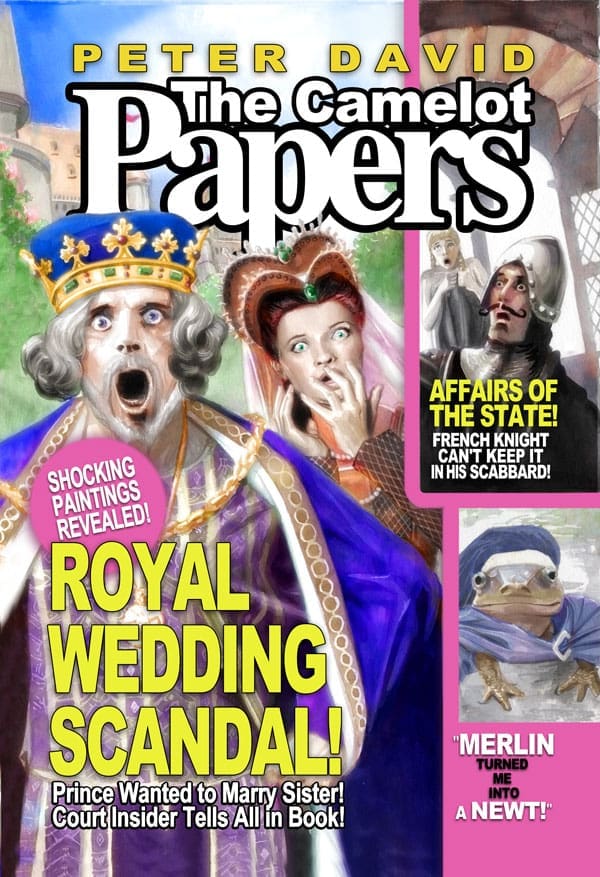
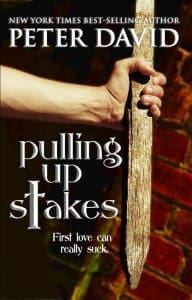
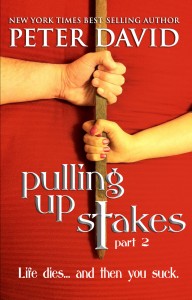
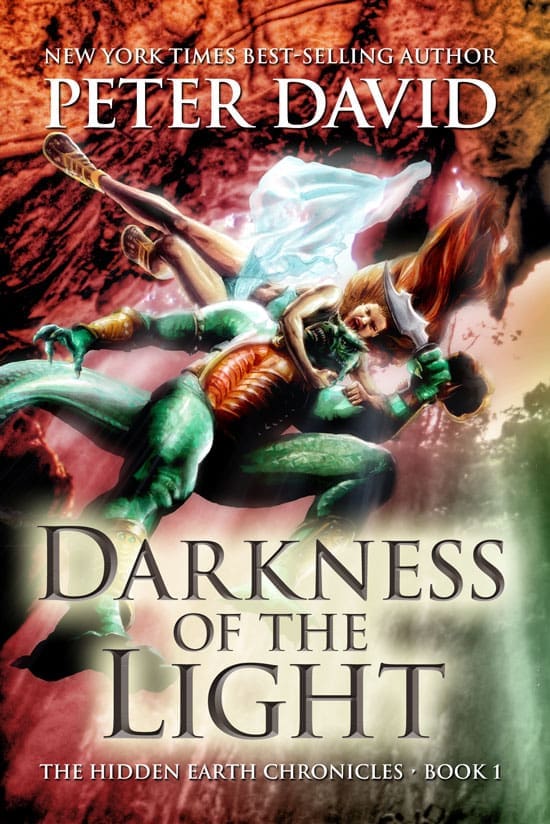
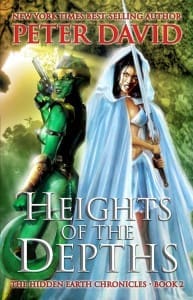
“it’s indicative of our very real effort to reach younger readers and get them into the comic habit early. ”
.
Jerry sounded like a tobaco executive or a drug dealer in that statement.
As George Carlin put it in Dogma, “If only we had their numbers.”
.
Apropos of nothing, the scenario Peter described above is almost exactly how I started reading Disney Adventures.
lol!
i thought the exact same thing as i read this….
That shifty ad-man is trying to hook these poor unsuspecting impressionable kids on the life-long, dangerous vice of READING!
Well, you know, reading is a gateway drug. Start them reading, the next thing you know they’re thinking about things, and that can lead to questioning the received wisdom of their elders, or even (gasp) thinking for themselves!!!
.
The horror… the horror…
My father instilled a love for reading in me since very early on. He would read me stories of Greek mythology, Arthurian legends and that sort of things. No wonder superhero comics became an obsession when I was a teenager. My first comic was an Action Comic my dad bought me in a 7-11(you see how made a connection to PAD’s original post ). I stop for financial reasons when I went to college but started again when I started working. English is my second language and comics are what first had me reading in English.
.
From there I jumped to sci-fi novels thanks to PAD (hey, the guy that writes the Aquaman comic is the same guy that writes this Star Trek book!) and Kevin J. Anderson’s Star Wars novels.
.
Seriously speaking, comics can turn into an addiction or at least a serious obsession. Until early last year I was buying an average of $80 dollars in comics a week and exhibiting behaviors of an addict. I was lying to my wife about the cost of the comics I was buying and hiding my weekly stack of comics and telling her they were old comics I hadn’t read yet. My credit card debt reached a couple of thousand dollars.
.
The birth of my son last year was the wake-up call. The cost associated with the new baby (baby formula is expensive!), not having time to read the comics plus the higher price of comics and layoffs at work made me decide to stop buying comics altogether. I tried just putting myself on a budget of maybe 10 comics a month (X-Factor was obviously one of them) but I felt like an alcoholic working on a bar every time I went to my comic shop to pick up my stack.
.
This behavior probably has more to do with my personality than the nature of comics themselves. But in my defense (and I say this tongue-in-cheek) Marvel and DC kept publishing this never ending story where every series is more interested in setting up the next series than telling a complete story.
At which point it will be up to Marvel to push a new incarnation of Marvel Comics, whether it be CD-ROM or whatever, to the new market.
.
Well, you were on the right path: Marvel did put out some collections on DVD, but you probably couldn’t have predicted the fact that physical media has for the most part given way to digital.
.
But a new incarnation? Marvel, like the music, movie, and book publishing industries before them, has struggling mightily on what to do with the digital reality that we now live in.
.
A new incarnation would embrace digital publishing, yet Marvel continues to resist, and I think much of that is to do with the unique relationship between publishers and comic book shops.
.
Parents, when looking at comics, are put off by what they perceive as high prices in comparison to what comics used to be.
.
And this certainly hasn’t gotten any better with time. After all, we’ve seen Marvel (with DC following, to a lesser degree) raise prices from $2.99 to $3.99 this year on a great many titles. A lot of long-time comic book readers have balked at the new pricing. I can only imagine how parents view the increase.
.
Meanwhile, it seems the best exposure to comics has been through other mediums: cartoons and especially now the success of Marvel’s movies. What better advertising than a movie making hundreds of millions at the box office? But, even then I’m not sure that such successes are getting people to buy comics.
Actually, I have to disagree with you somewhat. Marvel is, to my knowledge, the only one of the big publishers that is aggressively marketing digital versions of its titles. How aggressively? Let’s just say I can’t remember the last time I was able to check the email on my Yahoo! account without being bombarded by ads for Marvel’s online offerings. They were also quick to recognize the iPad as a platform for reading comics; in fact, I have an RSS feed that updates me at least weekly on all of the new titles available for reading on iPad or iPod Touch. It seems to me that Marvel is way ahead of the curve in terms of recognizing which way the market is going.
The thing is, Cap’n, that with Marvel’s ‘digital subscription’, you’re merely renting comics, and 6 month old ones, at that. At best, it’s Blockbuster for comics.
.
Where as, at least a number of other, small publishers actually sell digital versions of their comics. You not only get to buy, rather than rent, but you get new comics, rather than those ready for the trade paperback.
.
And why does Marvel have that 6 month wait for most of their digital rentals? Because they don’t want to anger the comic shops. Perhaps rightly so, but they’re missing out on sales because of it.
.
Not only that, but I feel that Marvel’s digital catalog is not expanding rapidly enough. They advertise having over 5,000 comics available. Ok, Marvel is publishing, what, 50-75 titles a month? That’s 600-900 issues a year. So their +5000 comics would cover, at best, most of this decade.
.
Now, one can argue that it takes time to build a collection, but it’s been going for a couple of years now and it doesn’t seem like they’re making much progress. Spidey and FF #1-100? Ok, and then what? Over 400 complete series? Glancing over the list, it’s mostly minis and maybe stuff that lasted 12 issues; very few, like the most recent Captain America series before it got renumbered, are more issues than that. They’ve got Wolverine v1 and v3 complete, but only chunks of v2.
.
Maybe they’ve got far more than 5,000 comics – in which case they should probably update the number. Either way, I’m not interested in renting my comics, and I’m not interested in a delay.
I hear what you’re saying, Craig. For someone like me, the Marvel’s model works pretty well. I gave up on trying to stay current some time ago, so having older issues to peruse online complements my preference for perusing my back issues and picking up trades as they come out. I can see how the 6-month delay would be frustrating for someone trying to follow a current storyline.
.
Wasn’t Crossgen one of the companies that was selling subscriptions to new digital comics? That didn’t seem to work out too well, but I suspect they were a little ahead of their time. I really think the advent of the Age of the iPad/iPhone is going to revolutionize the way people read comics.
Peter: Lastly, I quarrel with your stating that I wrongly depicted you in having contempt for the direct-market buyer. That wasn’t my depiction. That was the way the article in Advertising Age depicted you. I just pointed it out.
Luigi Novi: As I stated on the other thread (I wanted to re-read it and respond to this point before reading this one for context, though I would’ve dispensed with the comment had I known this same point would be revisited here), I did not perceive the article to have depicted Calabrese as having contempt for the direct marker, only that he didn’t want to rely solely on it.
“Maybe manage to create some sort of “comic book club” aimed at schools, similar to the Arrow Book Clubs, wherein brochures are distributed and kids can order them.”
I was thrilled to see in “Archie & Friends” #147 that schools can have a comic book fair in addition to the traditional book fairs that I’m already familiar with. (www.comicbookfairs.com) I’m going to recommend this to my son’s school.